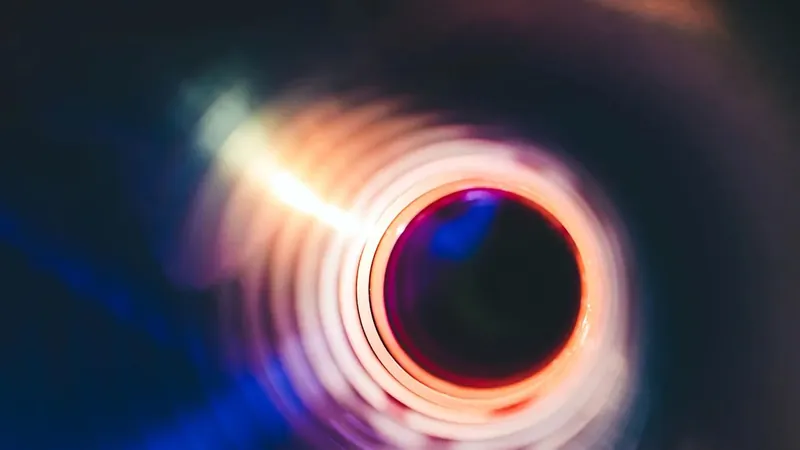
Einstein and Hawking's Theories Confirmed! New Discoveries in Black Hole Research
2025-09-12
Author: Michael
A Groundbreaking Discovery in Astrophysics
Astrophysicists have just made a monumental leap in understanding black holes, thanks to advanced gravitational wave detection technologies. This groundbreaking study presents the most detailed signal yet from two colliding black holes, merging into a massive entity weighing in at 63 solar masses.
The Mystery Unveiled
Black holes remain some of the cosmos's most enigmatic phenomena—so massive that not even light can escape their grasp. Studying these celestial giants has historically been a daunting task, but the 2015 detection of gravitational waves by the Laser Interferometer Gravitational-Wave Observatory (LIGO) opened the door to new astrophysical analyses. The 'chirp' sounds of black hole collisions, while seemingly faint, carry invaluable data.
Confirming Long-held Theories
Initial data from LIGO's first merger fell short of substantiating key black hole theories: the notion that black holes can be defined solely by their mass and spin, and Stephen Hawking's area theorem—suggesting that a black hole's event horizon can only expand.
However, after a decade of advances in detection technology, researchers now possess a 'pristine view' of black hole collisions. Maximiliano Isi, an astrophysicist from the Flatiron Institute, heralded this as a game-changer, stating, "This is the clearest view yet of the nature of black holes—undeniably supporting Einstein's theories."
The Clarity of Gravitational Waves
In their latest study, researchers investigated another black hole merger known as GW250114. This event not only confirmed Hawking’s theories but also showcased the spinning black holes merging at an incredible rate of 100 revolutions per second. The clarity of this gravitational wave signal allowed scientists to 'hear' the merging black holes, providing compelling evidence for the long-established laws of astrophysics.
Implications for Understanding the Universe
The validation of Hawking’s area theorem aligns with the Second Law of Thermodynamics, which dictates that entropy must not decrease. The researchers suggest these findings could unlock deeper cosmic secrets, particularly in understanding quantum gravity.
Isi commented, "The behavior of a black hole's event horizon compared to entropy has profound theoretical implications, allowing us to mathematically examine the essence of space and time."
Looking Ahead: The Future of Gravitational Wave Astronomy
The next decade promises even greater advancements, with gravitational wave detectors anticipated to be ten times more sensitive than today’s technology. Plans are already in motion for LIGO's successor, the Laser Interferometer Space Antenna (LISA), aimed at exploring lower-frequency gravitational waves—especially those generated by supermassive black holes.
For over a century, black hole research has relied on theoretical insights, but the increasing sophistication of gravitational wave detectors is now revealing a previously hidden universe, one collision at a time.









 Brasil (PT)
Brasil (PT)
 Canada (EN)
Canada (EN)
 Chile (ES)
Chile (ES)
 Česko (CS)
Česko (CS)
 대한민국 (KO)
대한민국 (KO)
 España (ES)
España (ES)
 France (FR)
France (FR)
 Hong Kong (EN)
Hong Kong (EN)
 Italia (IT)
Italia (IT)
 日本 (JA)
日本 (JA)
 Magyarország (HU)
Magyarország (HU)
 Norge (NO)
Norge (NO)
 Polska (PL)
Polska (PL)
 Schweiz (DE)
Schweiz (DE)
 Singapore (EN)
Singapore (EN)
 Sverige (SV)
Sverige (SV)
 Suomi (FI)
Suomi (FI)
 Türkiye (TR)
Türkiye (TR)
 الإمارات العربية المتحدة (AR)
الإمارات العربية المتحدة (AR)